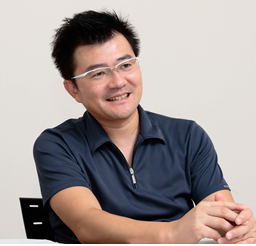Objectives
Abstract: It was long known that our genome harbors redundant components, which was introduced by the so-called two-round whole genome duplications (2R-WGD). In 2009, the speaker of this seminar proposed for the first time that the 2R-WGD occurred before the evolutionary lineage of cyclostomes (hagfishes and lampreys) branched off from the future jawed vertebrate lineage (Kuraku et al., 2009. Mol. Evol. Biol. 26:47-; ‘PV4 hypothesis’). Since then, the genome sequence information of cyclostomes (mainly northern hemisphere lampreys) has been repeatedly analyzed, which however has not resulted in synthetic understanding that reconciles different aspects of their genomes including multiplicity of landmark gene clusters (e.g. Hox gene clusters) and phylogenetic properties of paralogous genes. Most recently, the speaker’s research group performed whole genome sequencing and molecular evolutionary analysis of elasmobranch sharks (Hara et al., 2018. Nat. Ecol. Evol. 2:1761-). These genomes exhibit remarkably lesser degrees of sequence divergence and thus highlight a derived nature of cyclostome genomes (reviewed in Manousaki et al., 2016.). This seminar will summarize the history of studies on the 2R-WGD and discuss potential solutions for disentangling it (see Onimaru & Kuraku, 2018. Brief. Funct. Genomics 17:352-).
 Short bio: Shigehiro Kuraku is a natural scientist working in the interface of molecular phylogenetics, developmental biology, and genome informatics, and is a chief developer of the online tools gVolante and aLeaves. He graduated from Kyoto University, Japan, where he completed his Ph.D. in 2005. After a 5-year assistant professorship in the University of Konstanz, Germany, he moved to Kobe, Japan in 2012 to supervise the DNA sequencing and genome analysis station in the RIKEN Kobe Campus. Now he works as Team Leader of Laboratory for Phyloinformatics in RIKEN Center for Biosystems Dynamics Research (BDR).
Short bio: Shigehiro Kuraku is a natural scientist working in the interface of molecular phylogenetics, developmental biology, and genome informatics, and is a chief developer of the online tools gVolante and aLeaves. He graduated from Kyoto University, Japan, where he completed his Ph.D. in 2005. After a 5-year assistant professorship in the University of Konstanz, Germany, he moved to Kobe, Japan in 2012 to supervise the DNA sequencing and genome analysis station in the RIKEN Kobe Campus. Now he works as Team Leader of Laboratory for Phyloinformatics in RIKEN Center for Biosystems Dynamics Research (BDR).

